Did you know that a single overlooked clause in a legal document once cost a company over $1 million in damages? In the high-stakes world of law and business, the devil truly lies in the details. Legal document review isn’t just about crossing t’s and dotting i’s; it’s about safeguarding fortunes, protecting reputations, and preserving livelihoods.
Consider the tale of a small startup that neglected to thoroughly review a partnership agreement. Buried deep within the document was a clause that granted the partner exclusive rights to the company’s groundbreaking technology. By the time the oversight was discovered, it was too late. The startup found itself embroiled in a costly legal battle, its future hanging in the balance.
This anecdote underscores the critical importance of meticulous legal document review. In a world where every word matters, attention to detail can mean the difference between success and catastrophe.
The Power of Document Review
Legal Document Review is akin to playing detective in the legal realm, meticulously combing through mountains of paperwork to uncover crucial details and hidden gems. This process involves scrutinizing contracts, agreements, emails, and other legal documents to extract pertinent information, identify potential risks, and ensure compliance with laws and regulations.
In litigation, document review serves as the backbone of building a compelling case, uncovering evidence, and preparing for trial. In compliance, it acts as a safeguard against regulatory violations, ensuring that businesses adhere to industry standards and legal requirements. During mergers and acquisitions, document review is a critical due diligence step, assessing the risks and liabilities associated with the transaction.
Legal document review isn’t just about reading between the lines; it’s about deciphering the intricate tapestry of legal language to navigate complex legal landscapes and safeguard the interests of individuals and businesses alike.
Deciphering Legal Labyrinths: The Vital Significance of Document Review
Legal document review stands as the gatekeeper between success and calamity in the legal arena. Errors or oversights in this intricate process can unleash a cascade of dire consequences, ranging from crippling financial losses to irreparable damage to reputation.
Picture a scenario where a crucial clause in a contract is overlooked, resulting in breached agreements and costly litigation battles that drain resources and tarnish credibility. Envision the aftermath of a compliance oversight, where regulatory violations lead to hefty fines and sanctions, threatening the very survival of a business.
In today’s unforgiving legal landscape, the stakes couldn’t be higher. From multimillion-dollar lawsuits to shattered client trust, the fallout from document review mishaps can be catastrophic. Legal document review isn’t just about scrutinizing words on paper; it’s about safeguarding against the treacherous pitfalls that lurk within the fine print.
The Ensemble Cast of Legal Document Review
Legal document review is a collaborative performance, starring a diverse cast of legal professionals who bring their expertise to the stage. Attorneys take the lead role, employing their keen legal acumen to interpret complex language and identify critical insights within documents. Paralegals provide invaluable support, assisting with document organization, coding, and analysis, ensuring that no detail goes unnoticed.
Enter stage left, technology-assisted review (TAR), the cutting-edge sidekick revolutionizing the process. TAR, powered by artificial intelligence and machine learning, acts as a digital assistant, sifting through vast troves of data with lightning speed and precision.

Together, this ensemble cast creates a harmonious symphony of legal prowess, blending human insight with technological innovation to navigate the intricate landscape of legal documents. In the theater of law, each performer plays a vital role, ensuring that the show goes on with accuracy, efficiency, and flair.
A Blog for the Inquisitive Minds
This blog is tailored for legal practitioners, business professionals, and anyone with a curiosity for the inner workings of the legal world. Whether you’re a seasoned lawyer navigating complex litigation, a savvy entrepreneur negotiating contracts, or an inquisitive individual eager to understand the nuances of legal document review, this blog is your compass in the legal labyrinth.
Legal professionals will find valuable insights to enhance their document review processes, streamline workflows, and stay abreast of emerging trends in the legal landscape. Business professionals will discover strategies to mitigate risks, ensure compliance, and safeguard their organizations’ interests through effective document review practices.
For curious minds seeking to unravel the mysteries of legal document review, this blog offers a captivating journey into the heart of legal analysis and interpretation. Welcome aboard as we embark on a quest for knowledge and enlightenment in the realm of law.
The Legal Document Review Process
Embark on a riveting journey into the heart of the legal realm with the Legal Document Review Process. It’s a captivating expedition where legal professionals meticulously scrutinize contracts, agreements, and correspondence, extracting vital insights and unraveling hidden truths. Like skilled detectives, they decode complex language, identify risks, and ensure compliance with laws and regulations. Through the lens of legal document review, the intricate tapestry of the law comes alive, revealing the delicate balance between precision and interpretation. Join us as we navigate the twists and turns of this exhilarating process, where every word holds the key to justice and clarity.
Pre-review tasks:
1. Understanding the Project:
The project at hand encompasses a series of defined goals and objectives aimed at conducting a thorough review of pertinent documents within a specified timeframe. The primary objective is to extract critical insights and mitigate potential risks embedded within the legal documents under scrutiny. Key legal issues pertinent to the review include contract compliance, regulatory adherence, and potential liabilities.
Crucially, the project is governed by specific deadlines, necessitating meticulous planning and execution to ensure timely completion. These deadlines serve as milestones, guiding the progression of the review process and emphasizing the importance of efficient document analysis and decision-making.
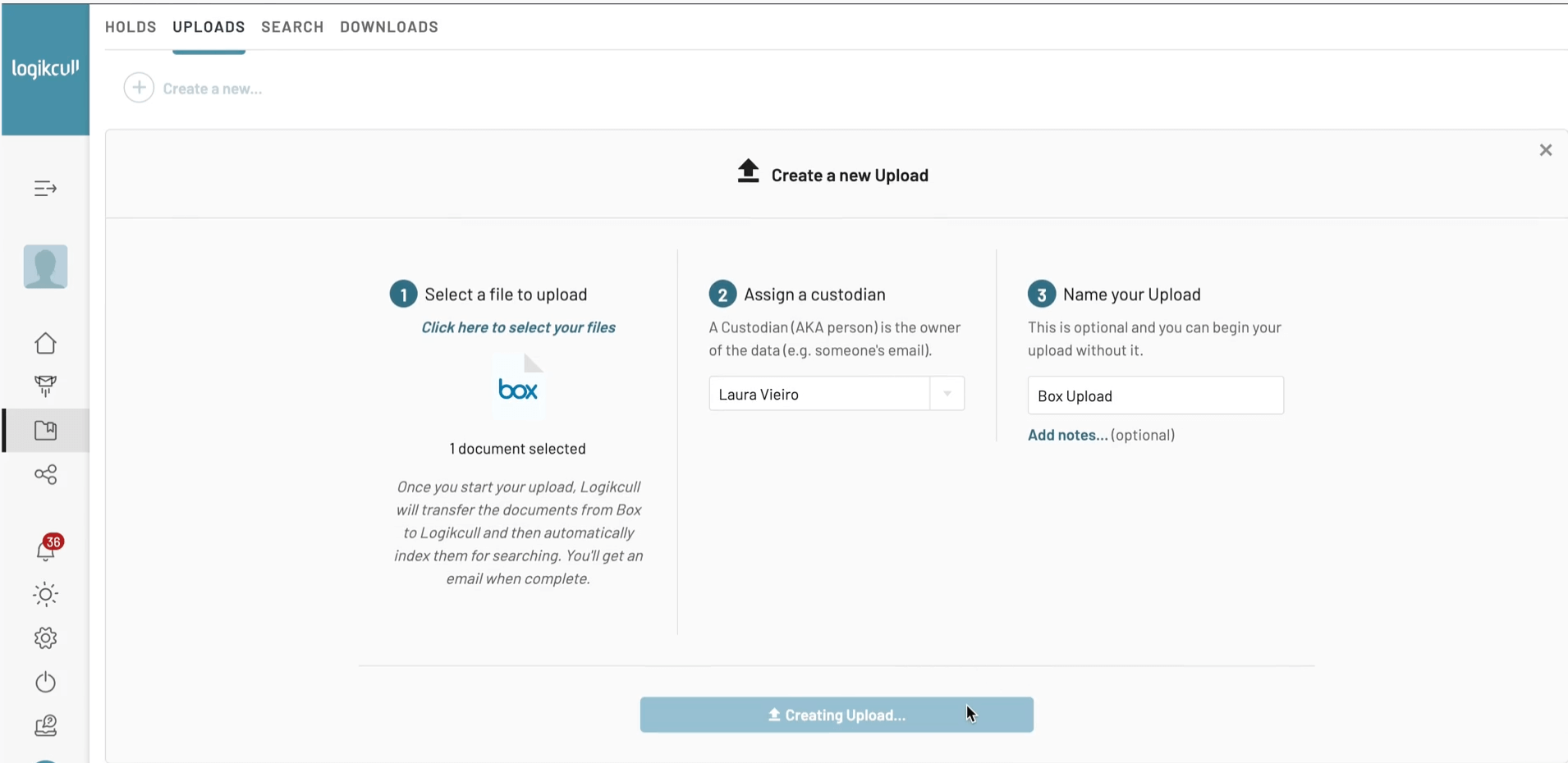
Through methodical examination and adherence to established timelines, the project aims to achieve a comprehensive understanding and resolution of legal matters at hand. Each document must be scrutinized with precision, every legal issue addressed thoroughly, and all deadlines met by organizational requirements and legal obligations.
2. Data collection and Processing:
In the realm of legal document review, efficient data collection is paramount. Traditional methods involve identifying relevant documents through manual searches, subpoenas, and requests for production. However, in today’s digital age, electronic discovery (eDiscovery) techniques have emerged as powerful tools for streamlining the process.
eDiscovery employs sophisticated software to search, collect, and analyze electronic data, including emails, files, and databases, from various sources such as computers, servers, and cloud storage. These tools utilize advanced search algorithms and metadata analysis to sift through vast volumes of data, identifying relevant documents based on specified criteria.

Furthermore, eDiscovery techniques can deduplicate, organize, and prioritize documents, making the review process more efficient and cost-effective. By leveraging eDiscovery, legal professionals can uncover key evidence, identify patterns, and gain valuable insights while minimizing manual effort and mitigating the risk of overlooking crucial information. In summary, eDiscovery revolutionizes data collection by harnessing the power of technology to streamline the legal document review process.
3. Developing a Review Protocol:
Creating a review protocol is a crucial step in ensuring consistency, accuracy, and efficiency throughout the document review process. The protocol serves as a blueprint, outlining the review criteria, coding scheme, and quality control procedures to guide reviewers and maintain the integrity of the review.
The review criteria specify the parameters for identifying relevant documents, including keywords, date ranges, and document types. The coding scheme establishes standardized codes for categorizing documents based on relevance, privilege status, and other attributes. Quality control procedures outline methods for sample testing, reviewer calibration, and error resolution to uphold the accuracy and reliability of the review.
Collaboration among legal teams, project managers, and technology experts is essential in developing a robust review protocol that aligns with project goals and legal requirements. By establishing clear guidelines and procedures upfront, the review protocol facilitates seamless coordination and ensures that all stakeholders are aligned in their approach to document review.
Review Techniques:
1. Manual Review:
Manual review remains a cornerstone of document review processes, particularly for assessing responsiveness, privilege, and other critical factors. In traditional methods, legal professionals meticulously examine each document to determine its relevance to the case, the presence of privileged information, and adherence to specified criteria.
For responsiveness, reviewers analyze the content of each document to ascertain its relevance to the legal matter at hand. This involves reading through the document, assessing its context, and determining its potential significance to the case.

Privilege review involves identifying documents that may be protected by attorney-client privilege or work product doctrine. Reviewers flag documents containing confidential communications between attorneys and clients or those prepared in anticipation of litigation.
Other factors considered during the manual review include the identification of key issues, potential conflicts of interest, and the presence of confidential or sensitive information.
While manual review offers a thorough and nuanced approach to document analysis, it can be time-consuming and resource-intensive, particularly for large datasets. However, it remains a valuable method for ensuring accuracy and comprehensiveness in legal document review processes.
2. Technology-Assisted Review (TAR):
Technology-assisted review (TAR) revolutionizes the document review process by harnessing the power of advanced algorithms and machine learning techniques to streamline workflow and enhance accuracy. Predictive coding, a key component of TAR, utilizes algorithms to analyze document content and predict relevance based on criteria provided by human reviewers. By training the system on a subset of documents manually reviewed by legal experts, predictive coding can identify patterns and characteristics indicative of relevance, allowing it to prioritize documents for review accordingly.
Active learning is another TAR methodology that optimizes efficiency by dynamically adapting to reviewer feedback. The system continuously learns from reviewer decisions, refining its understanding of relevance criteria and prioritizing documents based on emerging patterns.

TAR not only accelerates the review process by minimizing the need for manual document inspection but also improves accuracy by reducing the risk of human error and inconsistency. By automating repetitive tasks and leveraging machine learning capabilities, TAR empowers legal professionals to focus their expertise on higher-level analysis and decision-making, ultimately enhancing the overall quality and efficiency of the document review process.
3. Hybrid Review:
Hybrid review integrates the strengths of both manual and technology-assisted approaches to optimize the document review process. In this hybrid model, legal professionals leverage advanced technology tools alongside traditional manual review methods to enhance efficiency, accuracy, and cost-effectiveness.
The process typically begins with the application of technology-assisted review (TAR) techniques such as predictive coding or active learning to prioritize documents based on relevance criteria. These automated tools analyze document content, identify patterns, and predict potential relevance, thereby reducing the volume of documents requiring manual review.
Once the initial prioritization is complete, human reviewers step in to conduct a more in-depth analysis of the remaining documents. They assess responsiveness, privilege status, and other key factors that require human judgment and expertise.

Hybrid review offers several advantages over purely manual or technology-assisted approaches. It combines the speed and scalability of technology with the nuanced understanding and contextual insight provided by human reviewers. By striking a balance between automation and human intelligence, hybrid review maximizes efficiency while ensuring thoroughness and accuracy in the document review process. This approach enables organizations to achieve optimal outcomes while effectively managing resources and timelines.
Quality Control:
In the realm of legal document review, maintaining high standards of accuracy and consistency is paramount. Quality control measures play a pivotal role in ensuring that the review process remains robust and reliable. Calibration exercises stand as pillars of quality control, involving the training and alignment of reviewers to ensure consistent evaluations of document relevance and adherence to coding criteria. Through these exercises, reviewers harmonize their judgments, fostering uniformity and reducing discrepancies in document assessments.
Blind reviews serve as another crucial element in quality control, shielding reviewer identities and mitigating the influence of bias on decision-making. By conducting blind reviews, reviewers assess documents without knowledge of others’ judgments or preconceived notions, promoting objectivity and impartiality in the review process.
Moreover, regular sampling and testing of reviewed documents enable quality control teams to assess the accuracy of reviewer decisions and identify potential discrepancies or errors. By analyzing sample sets, discrepancies or errors can be pinpointed and rectified promptly, ensuring the integrity of the overall review process.
Additionally, continuous monitoring and feedback mechanisms allow for ongoing improvement and refinement of review methodologies. Regular audits, peer reviews, and feedback loops provide valuable insights into reviewer performance and identify areas for enhancement, ultimately contributing to the overall quality and efficacy of the document review process.
In essence, robust quality control measures serve as the bedrock of a successful document review process, instilling confidence in the accuracy, reliability, and integrity of the outcomes produced.
Production and privilege logging:
As the document review process nears its conclusion, the focus shifts to preparing responsive documents for production and identifying and safeguarding privileged information.
Production involves the final stage of gathering and formatting responsive documents to be delivered to opposing parties or relevant stakeholders in litigation or regulatory proceedings. This process requires careful organization and coordination to ensure that all relevant documents are accurately compiled and presented in the appropriate format specified by the court or regulatory authority.
Simultaneously, privilege logging is conducted to identify and protect documents that are subject to attorney-client privilege, work product doctrine, or other legal protections. Legal professionals meticulously review each document to determine its privileged status, documenting relevant details such as the date, author, recipients, and subject matter. This privilege log serves as a critical record of privileged documents, helping to protect sensitive information from disclosure during legal proceedings.
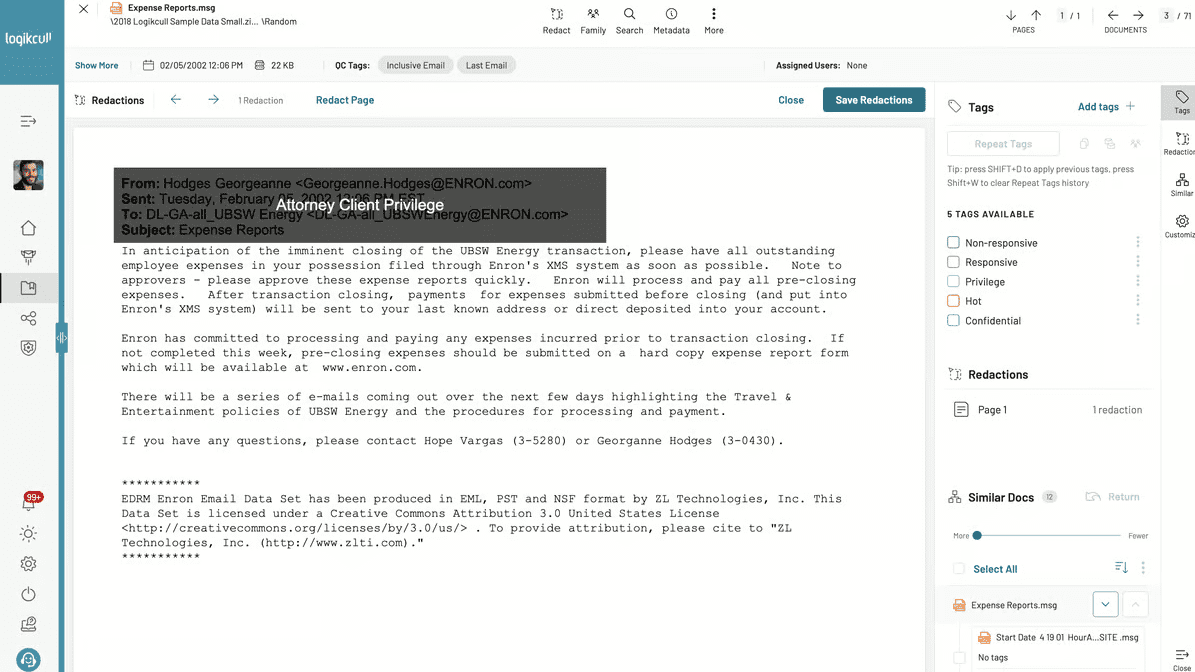
Throughout production and privilege logging, adherence to strict protocols and guidelines is essential to maintain confidentiality, accuracy, and compliance with legal requirements. Robust quality control measures, including peer reviews and double-checks, are employed to mitigate the risk of inadvertent disclosure or errors.
Overall, the final stages of preparing responsive documents for production and privilege logging represent critical milestones in the document review process, ensuring that only relevant, non-privileged information is disclosed while safeguarding privileged communications and work products from improper disclosure or scrutiny. Through meticulous attention to detail and adherence to best practices, legal teams uphold the integrity and confidentiality of the document review process, fostering trust and confidence in the outcomes produced.

Best Practices for Legal Document Review
Whether you’re a seasoned attorney, a diligent paralegal, or a curious legal enthusiast, these tried-and-tested strategies empower you to conduct thorough document analyses, identify critical insights, and mitigate potential risks effectively. From leveraging advanced technology tools to implementing rigorous quality control measures, these best practices ensure that every document review is conducted with precision, efficiency, and integrity.
-
Effective Communication:
Effective communication serves as the cornerstone of successful document review processes, fostering collaboration, alignment, and efficiency among reviewers, project managers, and attorneys. Clear and concise communication ensures that all stakeholders are aligned in understanding project objectives, review criteria, and expectations, minimizing misunderstandings and errors.
In a notable case history, the lack of clear communication led to costly consequences. In the landmark case of Smith v. Jones, conflicting interpretations of review instructions among legal teams resulted in the inadvertent production of privileged documents, jeopardizing the client’s case and reputation. This costly oversight underscored the critical importance of robust communication channels and protocols within document review teams.
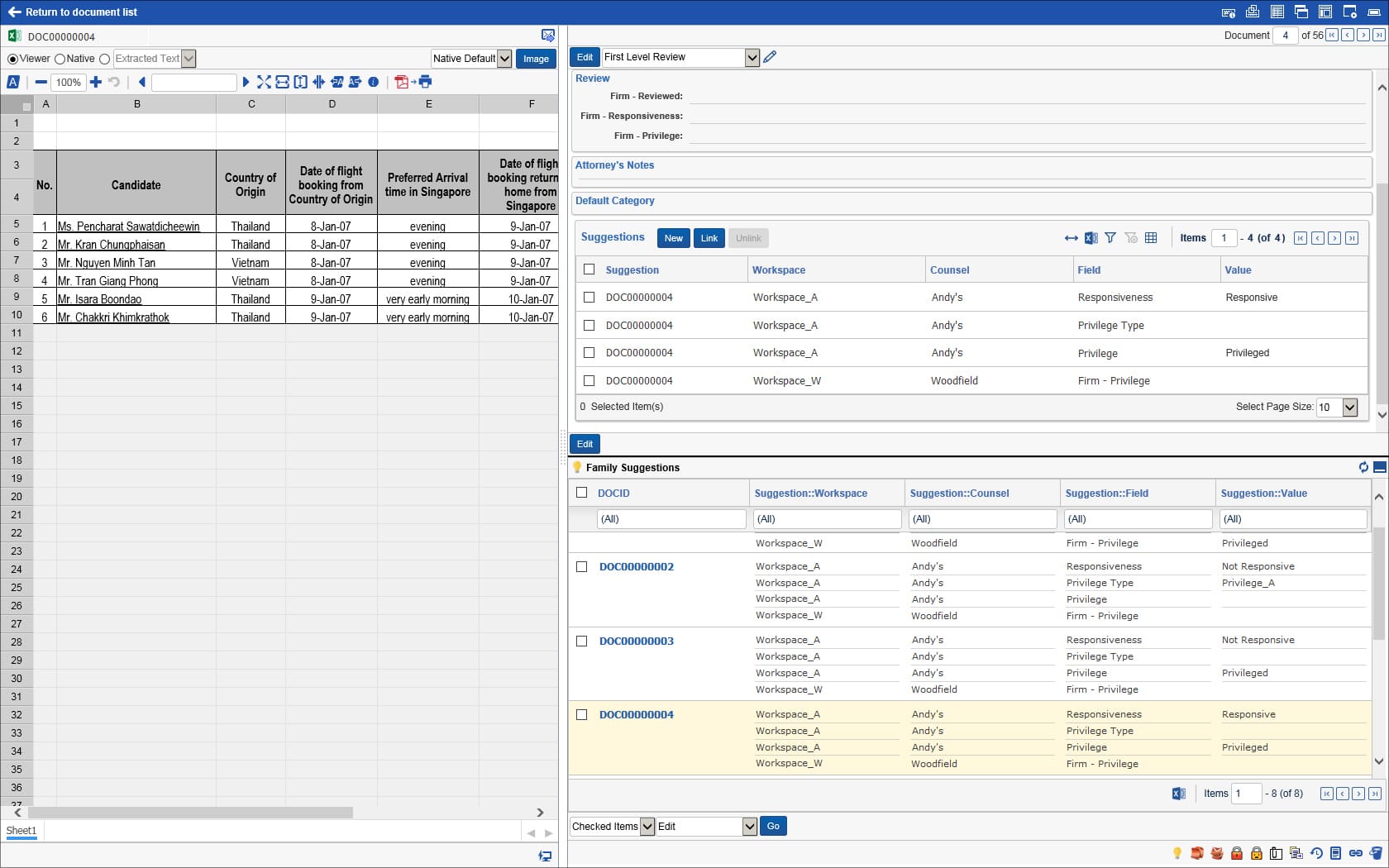
Clear communication also facilitates the timely resolution of issues, allows for effective coordination of tasks, and promotes transparency and accountability throughout the review process. By fostering open dialogue and active engagement, legal professionals can identify challenges early, address concerns promptly, and adapt strategies to meet evolving needs and priorities.
Moreover, effective communication enhances team morale and cohesion, fostering a collaborative environment where diverse perspectives are valued, and individual contributions are recognized. Ultimately, clear and concise communication lays the foundation for successful document review outcomes, ensuring that legal teams operate cohesively and effectively in pursuit of client objectives and legal excellence.
-
Staying Organized:
Staying organized amidst large volumes of documents is essential for maintaining efficient workflows in document review processes. One key strategy is to implement a systematic approach to document organization, including the use of document management software and categorization techniques. By organizing documents into logical folders, tagging them with relevant metadata, and entities, and establishing clear naming conventions, legal teams can streamline retrieval and access, saving valuable time and effort.

Additionally, creating standardized workflows and protocols helps maintain consistency and clarity throughout the review process. Assigning roles and responsibilities, establishing deadlines, and defining escalation procedures ensure that tasks are completed promptly and efficiently. Regular team meetings and check-ins further facilitate communication and coordination, allowing for the timely resolution of issues and the sharing of best practices.
Furthermore, leveraging technology tools such as optical character recognition (OCR) and advanced search functionalities enables swift document processing and retrieval, enhancing productivity and responsiveness. Embracing automation where feasible, such as through batch processing and automated document tagging, helps expedite routine tasks and minimize manual effort.
By implementing these strategies, legal teams can effectively manage large volumes of documents while maintaining efficient workflows, ensuring that document review processes remain organized, streamlined, and conducive to optimal outcomes.
-
Time Management:
Effective time management is crucial for navigating tight deadlines and prioritizing tasks under pressure. One tip is to start by identifying the most critical and time-sensitive tasks and allocating sufficient time and resources to address them promptly. Breaking down larger projects into smaller, manageable tasks can also help prevent overwhelm and facilitate progress.
Another strategy is to leverage tools and techniques such as to-do lists, calendars, and project management software to track deadlines, milestones, and progress. By visualizing tasks and deadlines, individuals can maintain focus and prioritize activities accordingly.
Moreover, practicing effective delegation and collaboration allows for the distribution of workload and the pooling of expertise, ensuring that tasks are completed efficiently and on time. Communicating expectations, roles, and deadlines clearly with team members fosters accountability and facilitates alignment toward shared objectives.
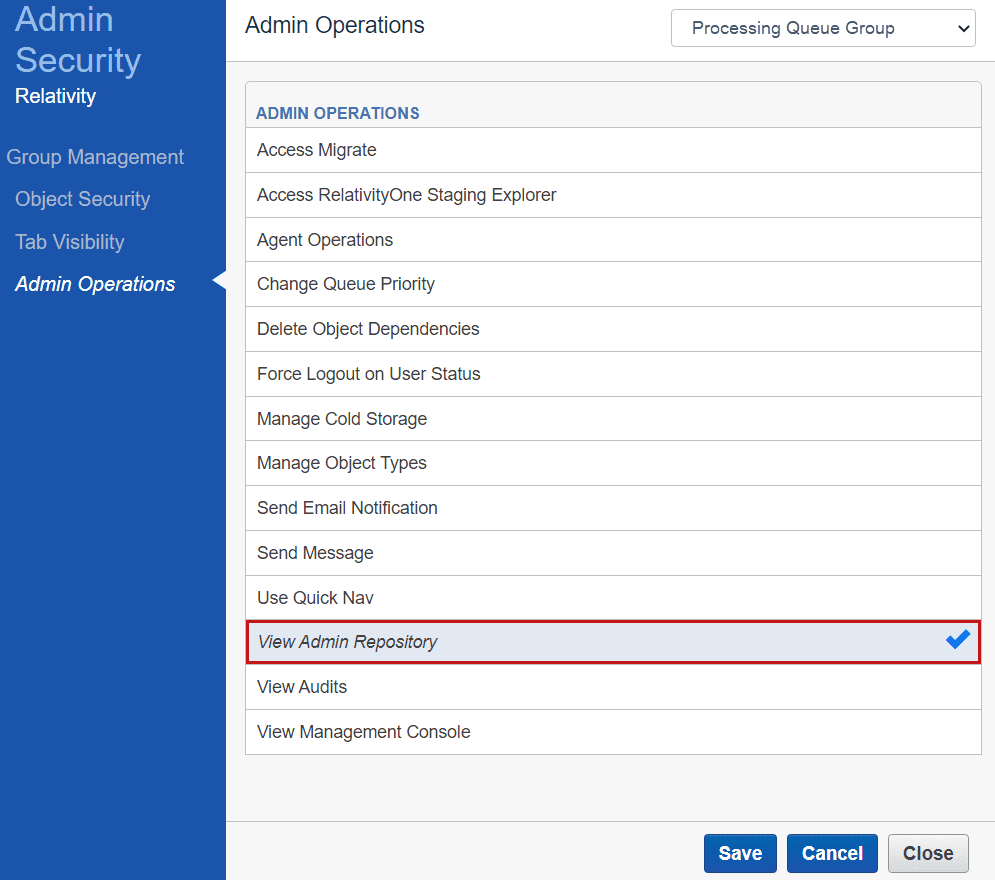
For instance, in a high-stakes litigation case, legal teams faced with tight deadlines must prioritize tasks strategically to meet court-imposed deadlines for document production. By identifying key documents requiring review, allocating resources effectively, and leveraging technology-assisted review tools, teams can navigate the pressure of time constraints while maintaining accuracy and compliance with legal requirements.
Ultimately, by implementing these tips and strategies, individuals can enhance their ability to manage time effectively, optimize productivity, and meet deadlines under pressure.
-
Ethical Considerations:
Ethical conduct lies at the core of document review, serving as a guiding principle to uphold integrity, trust, and professionalism throughout the process. Central to ethical considerations is the imperative to safeguard data privacy and maintain attorney-client privilege, ensuring that sensitive information remains confidential and protected from unauthorized disclosure.
Respecting data privacy entails adhering to relevant laws and regulations governing the collection, storage, and redaction/processing of personal and confidential information. Legal professionals must exercise diligence and caution when handling sensitive data, implementing robust security measures and encryption protocols to prevent unauthorized access or breaches.

Furthermore, preserving attorney-client privilege requires strict adherence to confidentiality and privilege protocols, safeguarding communications and work products from disclosure without proper authorization. This includes taking measures to prevent inadvertent disclosure, such as redacting privileged information and implementing access controls to restrict unauthorized viewing.
Maintaining ethical standards in document review not only upholds the integrity of the legal profession but also fosters trust and confidence among clients, stakeholders, and the public. By prioritizing ethical conduct, legal professionals demonstrate a commitment to fairness, transparency, and respect for the rule of law, thereby enhancing the credibility and reputation of the legal profession as a whole.
-
Continuing Education:
Continuing education is paramount for legal professionals to stay abreast of evolving legal regulations and best practices in document review. As laws and regulations undergo constant changes, staying current ensures that legal practitioners maintain proficiency and competence in navigating complex legal landscapes.
In a notable case, the landmark decision in Daubert v. Merrell Dow Pharmaceuticals underscored the importance of staying current with evolving legal standards. The case established the Daubert standard for the admissibility of expert testimony, reshaping the landscape of evidence law and influencing document review practices. Legal professionals who remained informed and updated on these developments were better equipped to navigate the implications of the ruling and adapt their document review strategies accordingly.
Continuing education opportunities abound, including seminars, webinars, conferences, and professional development courses tailored to legal professionals. Engaging in ongoing learning fosters a culture of continuous improvement and professional growth, empowering legal practitioners to enhance their knowledge, skills, and expertise in document review.
Moreover, networking with peers, participating in discussion forums, and subscribing to industry publications and newsletters provide valuable insights into emerging trends, challenges, and best practices in document review. By embracing lifelong learning, legal professionals can remain at the forefront of their field, delivering exceptional service and value to clients while upholding the highest standards of legal excellence.

The Future of Legal Document Review
We now explore emerging technologies, methodologies, and regulatory shifts shaping the legal landscape. We anticipate the role of AI, blockchain, and evolving practices, guiding practitioners towards informed adaptation and proactive responses to forthcoming opportunities and challenges in document review.
-
Emerging technologies:
Artificial Intelligence (AI) and machine learning are revolutionizing legal document review, offering unparalleled efficiency, accuracy, and scalability. These technologies enable advanced algorithms to analyze vast volumes of documents, identify patterns, and extract insights with remarkable precision.
In the landmark case of United States v. Daubert, the court accepted expert testimony based on AI algorithms’ analysis of handwriting samples, highlighting the transformative potential of AI in legal proceedings. AI-powered document review tools, such as predictive coding and natural language processing, streamline the review process by prioritizing relevant documents, reducing manual effort, and minimizing human error.

Machine learning algorithms continuously adapt and improve their performance based on feedback, enhancing accuracy and consistency over time. By leveraging AI, legal professionals can navigate complex datasets more efficiently, uncovering key insights and trends that may have otherwise gone unnoticed.
Moreover, AI-driven document review platforms offer customizable features, allowing legal teams to tailor algorithms to specific case requirements and review criteria. This flexibility enhances adaptability and responsiveness, empowering legal practitioners to address evolving client needs and regulatory demands effectively.
In essence, AI and machine learning technologies are reshaping the legal document review landscape, empowering legal professionals to achieve unprecedented levels of efficiency, accuracy, and insight in their practice.
Changes in the legal landscape:
As regulations and legal paradigms continue to evolve, the future of document review practices faces significant shifts and challenges. For instance, the implementation of stringent data privacy laws like the European Union’s General Data Protection Regulation (GDPR) and the California Consumer Privacy Act (CCPA) necessitates heightened scrutiny and compliance in handling personal and sensitive information during document review processes.
In the landmark case of Carpenter v. United States, the U.S. Supreme Court ruled that law enforcement agencies must obtain a warrant to access historical cell phone location data, highlighting the growing emphasis on privacy rights in the digital age. As such, document review practices must adapt to incorporate robust data protection measures, encryption protocols, and access controls to safeguard sensitive information.
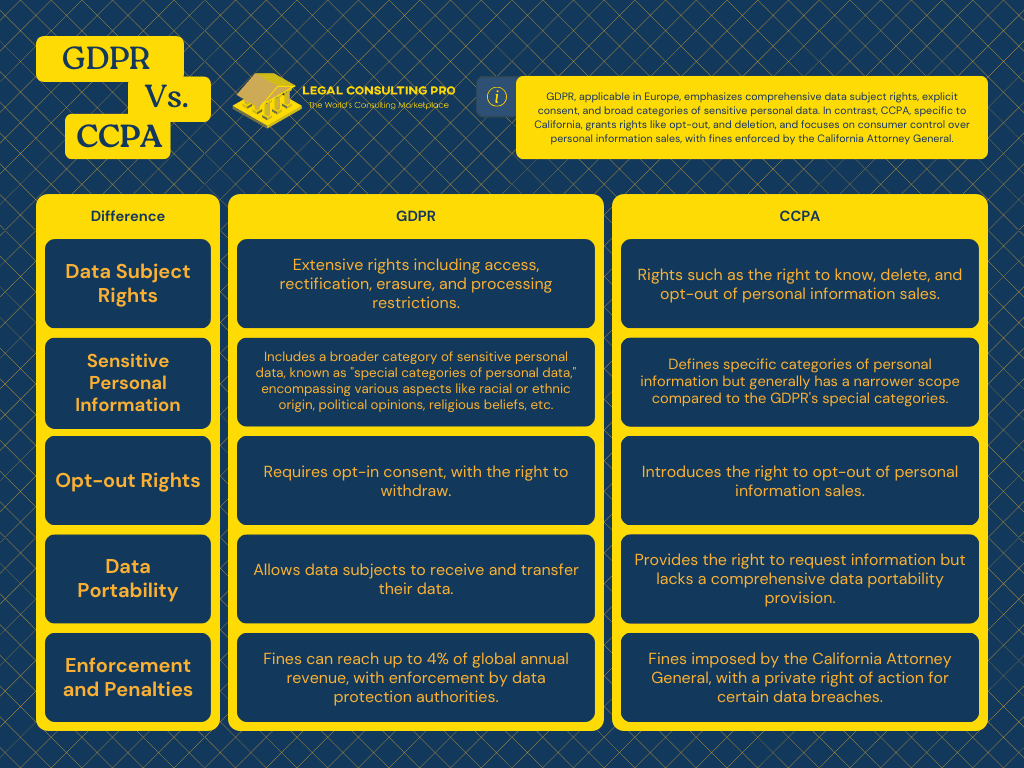
Moreover, emerging legal frameworks surrounding emerging technologies such as artificial intelligence and blockchain pose novel challenges and considerations for document review practices, requiring legal professionals to stay vigilant and adaptive to emerging regulatory landscapes. Overall, staying abreast of regulatory changes and evolving legal paradigms is imperative for ensuring compliance and effectiveness in document review practices.
-
The role of human expertise:
Despite technological advancements, human expertise remains indispensable in the document review process, providing essential judgment and critical thinking skills that technology alone cannot replicate. While AI and machine learning algorithms excel at processing large volumes of data and identifying patterns, human reviewers bring nuanced understanding, contextual insight, and legal interpretation to the table.
Human judgment enables reviewers to discern subtle nuances, assess credibility, and evaluate the relevance of documents within the broader legal context. Critical thinking allows reviewers to identify potential biases, inconsistencies, and discrepancies that algorithms may overlook, ensuring thoroughness and accuracy in document analysis.
Furthermore, human expertise is crucial in interpreting complex legal concepts, assessing privilege, and making nuanced decisions that require ethical considerations and discretion. By integrating human judgment with technological advancements, document review processes can achieve optimal outcomes, balancing efficiency, accuracy, and adherence to legal standards and ethical principles. Ultimately, the role of human expertise remains paramount in driving informed decision-making and ensuring the integrity of the document review process.
Common Challenges in Legal Document Review
Legal document review, while essential, presents a myriad of challenges that legal professionals must navigate with precision and diligence. One of the most prominent hurdles is the sheer volume of documents. In today’s digital age, terabytes of data flood legal databases, making it akin to searching for a needle in a haystack. This deluge of information overwhelms reviewers, prolongs review timelines, and escalates costs.
Furthermore, ensuring accuracy amidst this sea of documents poses a significant challenge. Human error, fatigue, and cognitive biases can compromise the integrity of the review process, leading to oversight of critical information or misinterpretation of legal nuances. Maintaining consistency across multiple reviewers adds another layer of complexity, as interpretations and judgments may vary, impacting the reliability and coherence of the review outcome.
Here’s what a Senior Criminal Lawyer and Managing Director/Attorney had to say about the biggest challenges in eDiscovery today:
Navigating Massive Data Volumes
A significant challenge encountered by legal professionals during eDiscovery document review is the insurmountable quantity of data. As a result of the increasing digitization of information, legal teams are frequently tasked with reviewing and analyzing immense quantities of electronic documents, emails, and other digital records. Sifting through this quantity of information may prove to be a formidable and time-intensive task, potentially resulting in setbacks and escalated expenses during the discovery phase.
By utilizing sophisticated technological tools like predictive coding, machine learning, and data analytics, it is possible to optimize the process of document review, enhance efficiency, and prioritize pertinent information to tackle this challenge. Moreover, for the successful administration of large-scale eDiscovery projects, collaboration among legal teams and the implementation of efficient project management strategies are indispensable.
Ahmad Faraj, Owner, Principal & Senior Criminal Lawyer, Faraj Defence Lawyers
Efficient Management of ESI Challenges
I can attest that the overwhelming volume of data that attorneys must sift through is one of the greatest obstacles they encounter during e-discovery document review. The proliferation of electronically stored information (ESI) in the digital age has significantly increased the effort and resources required to examine documents. A substantial challenge arises from the need to efficiently manage and analyze this enormous volume of data while simultaneously upholding the integrity of evidence and assuring adherence to legal obligations. By capitalizing on cutting-edge technologies and implementing calculated methodologies, it is possible to successfully surmount this obstacle and guarantee a comprehensive and precise document review procedure.
John Truong, Managing Director and Attorney, Alliance Compensation & Litigation Lawyers
Navigating complex regulatory landscapes presents yet another obstacle. With evolving data privacy laws, cross-border regulations, and industry-specific compliance standards, legal professionals must stay abreast of the latest developments to ensure adherence and mitigate risks of non-compliance.
Moreover, the rise of electronic discovery (eDiscovery) and the proliferation of digital communication platforms introduce technical complexities. Extracting relevant information from diverse file formats, email threads, and metadata requires specialized tools and expertise, adding layers of complexity to the review process.
In addition to these logistical challenges, maintaining confidentiality and privilege presents a critical concern. Legal teams must meticulously identify and protect privileged information while ensuring transparency and fairness throughout the review process.
Lastly, resource constraints pose a perpetual challenge. Limited budgets, tight deadlines, and staffing limitations amplify pressure on legal teams, necessitating strategic resource allocation and effective project management.

In essence, legal document review is a complex and multifaceted endeavor fraught with challenges. Yet, by embracing technology, implementing best practices, and fostering collaboration, legal professionals can overcome these obstacles and unlock the insights hidden within the legal haystack.
Case studies highlighting successful document review projects
Case Study 1: Uncovering Fraudulent Practices
In a high-stakes securities litigation, a legal team faced the daunting task of reviewing millions of financial documents to uncover evidence of fraudulent practices. Leveraging advanced technology-assisted review (TAR) tools, the team streamlined the review process, prioritizing documents with potential indicators of misconduct. Through meticulous analysis and expert judgment, the team unearthed key evidence of securities fraud, including falsified financial statements and misleading disclosures. This pivotal discovery enabled the client to pursue legal action and secure substantial damages, signaling a triumph of diligence and tenacity in the pursuit of justice.
Case Study 2: Navigating Complex Regulatory Compliance
Amidst regulatory scrutiny and mounting compliance challenges, a multinational corporation sought to streamline its document review processes to ensure adherence to evolving data privacy laws and industry regulations. Collaborating with legal experts and leveraging cutting-edge eDiscovery technologies, the corporation implemented a comprehensive review protocol tailored to its unique compliance requirements. By systematically analyzing vast volumes of data, the team identified and addressed compliance gaps mitigated risks of non-compliance, and enhanced transparency and accountability across the organization. This proactive approach not only safeguarded the corporation against potential legal liabilities but also fostered a culture of compliance and integrity within the company.
Case Study 3: Resolving Complex Intellectual Property Disputes
In a fiercely contested intellectual property dispute, a leading technology firm confronted a multitude of challenges in reviewing extensive patent portfolios, licensing agreements, and technical documents. Drawing upon a multidisciplinary team of legal experts and subject matter specialists, the firm employed a strategic blend of manual review and technology-assisted methodologies to navigate the intricacies of patent law and technical specifications. Through meticulous analysis and strategic insights, the team uncovered critical evidence of patent infringement and misappropriation of intellectual property, enabling the firm to secure favorable settlements and protect its valuable innovations. This landmark victory underscored the power of strategic document review in safeguarding intellectual assets and preserving competitive advantage in the digital age.
Case Study 4: Ensuring Corporate Transparency and Governance
In the wake of corporate scandals and heightened scrutiny of corporate governance practices, a Fortune 500 company embarked on a comprehensive review of its internal policies, procedures, and communications to enhance transparency and accountability. Partnering with a trusted legal advisor, the company implemented a rigorous review process, scrutinizing corporate documents, emails, and board minutes for compliance with regulatory standards and ethical guidelines. By promoting a culture of openness and accountability, the company not only mitigated reputational risks but also bolstered stakeholder confidence and investor trust. This commitment to corporate transparency served as a beacon of integrity and governance excellence in an increasingly complex and scrutinized business environment.
Conclusion
Legal document review is a critical component of legal proceedings, ensuring accuracy, compliance, and effectiveness in navigating complex legal landscapes. The process involves several key steps, beginning with data collection and processing, where relevant documents are identified, collected, and organized for review. This is followed by developing a review protocol outlining criteria, coding schemes, and quality control procedures to guide reviewers. Next, reviewers analyze documents for responsiveness, privilege, and other factors, leveraging both manual and technology-assisted approaches to streamline workflows and enhance accuracy. Quality control measures such as calibration exercises and blind reviews are implemented to maintain consistency and reliability throughout the process.
In a notable example, the 2010 Deepwater Horizon oil spill litigation required meticulous document review to assess liability and damages. Legal teams sifted through millions of documents to uncover evidence of negligence, environmental impact, and regulatory compliance, underscoring the importance of thorough review processes in high-stakes cases.
Best practices in legal document review emphasize the importance of clear communication, time management, and continuing education. Effective communication ensures alignment among reviewers, project managers, and attorneys, fostering collaboration and efficiency. Prioritizing tasks and meeting deadlines under pressure requires strategic planning and delegation. Continuing education enables legal professionals to stay abreast of evolving regulations, technologies, and best practices, ensuring that document review processes remain adaptive and effective in the face of changing legal landscapes. By adhering to these principles and leveraging best practices, legal document review processes can uphold integrity, accuracy, and excellence in legal practice.
Ready to elevate your understanding of document review or ensure your organization’s compliance and efficiency? Dive deeper into the intricacies of legal document review through online resources, industry publications, and professional development opportunities. Explore specialized courses, webinars, and workshops tailored to legal professionals, offering insights into emerging technologies, best practices, and regulatory considerations shaping the field.
Alternatively, if you require expert guidance or support in navigating complex document review processes, consider seeking assistance from reputable legal consulting firms or experienced attorneys specializing in document review and eDiscovery. With their expertise and insights, you can navigate legal complexities with confidence, ensuring thoroughness, accuracy, and compliance in your document review endeavors.
Remember, staying informed and proactive is key to mastering document review and achieving optimal outcomes in legal practice. Take the initiative to expand your knowledge and seek professional guidance when needed to navigate the intricacies of document review effectively.
As you embark on your journey through the labyrinth of legal document review, remember: “The art of review lies not just in deciphering words, but in revealing truths hidden within them.” With every document scrutinized, every insight unearthed, and every challenge conquered, you delve deeper into the essence of justice and clarity. So let curiosity guide you, and let diligence be your compass as you navigate the seas of legality. In the words of Ralph Waldo Emerson, “The reward of a thing well done is to have done it.” Here’s to uncovering the gems within the legal haystack!
Resources
Here are some valuable resources for further information on legal document review:
Book:
- “Electronic Discovery and Digital Evidence: Cases and Materials” by Shira A. Scheindlin and Daniel J. Capra.
Online Courses:
- Coursera offers courses like “eDiscovery: An Introduction to Digital Evidence” and “eDiscovery: Advanced Search and Review Strategies”.
- Udemy provides courses such as “Document Review: Unlocking the Mysteries” and “Advanced Legal Document Review”.
Professional Organizations:
- The Association of Certified E-Discovery Specialists (ACEDS) offers resources, webinars, and certification programs focused on e-discovery and document review.
- The International Legal Technology Association (ILTA) provides insights, events, and networking opportunities related to legal technology and document review.
Legal Publications and Journals:
- “The Sedona Conference” publishes papers and guidelines on e-discovery, including document review best practices.
- “Law Technology Today” features articles and insights on legal technology trends, including document review strategies and innovations.
Webinars and Conferences:
- Participate in conferences such as LegalTech, Relativity Fest, and ILTACON, which often feature sessions and workshops on document review and e-discovery.







































